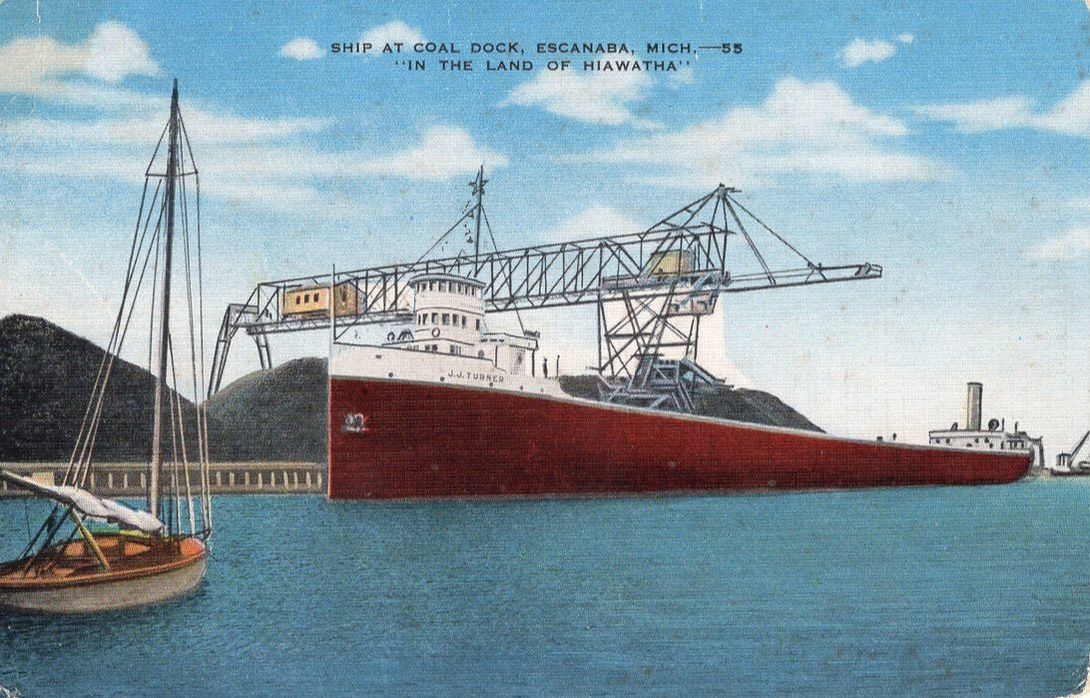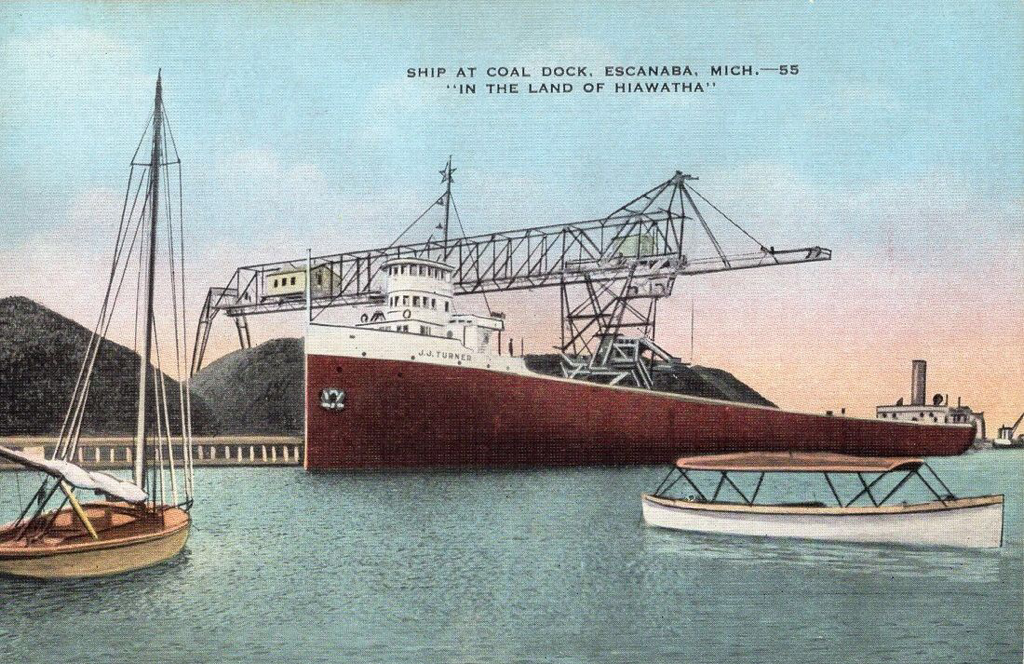|
Variations is a new feature we're introducing with a very puzzling set of cards. Variations refers to multiple cards that are clearly based on the same photograph, but with subtle–and sometimes not-so-subtle–differences. Often these cards are even from the same publisher or printer. Many variations simply feature different color schemes, or the removal of small items–clouds and telephone wires seem to be the most popular items commonly airbrushed out of old postcards. In fact, sometimes the telephone wires disappear, leaving the poles holding absolutely nothing aloft! The two cards featured in this post are both from the linen era, and clearly were made from the same original photograph. They were both published/printed by the E. C. Kropp Co. of Milwaukee, Wisconsin. Both cards feature the same title and series number on the obverse, and a similar item number on the reverse. Titled 'Ship at Coal Dock', both cards depict the J.J. Turner at the Escanaba coal dock in the process of unloading. A small sailboat appears to be at anchor in the left foreground. Depending on the card, a small motor launch is visible in the right foreground. The cards contain three variations: two common variations--color and clouds--and also one of the most obvious object removals we've ever seen. Here's a look at the variations:
High-res obverse and reverse images of these cards can be viewed by visiting our Coal exhibit. The question that comes to mind when looking at these types of variation is, why? It could be argued that the changes to the sky enhance the beauty of the card, and the Turner does stand out a little more and seems to appear slightly longer without another boat in front of it, so perhaps that's why.
'Why' is closely followed by 'how' when contemplating a variation of this magnitude. Nowadays, this type of photo manipulation could be done in minutes using Photoshop or similar software. But what was involved to accomplish something like this back in the day? And why bother with something that clearly must have been a time consuming process? Lastly, while it may or may not be relevant, it's interesting to note that the card without the small boat appears much more often on online auction/sales sites as the card with the boat. Is this because fewer of this card were made, or simply that fewer survived to be sold? Of course, we'll probably never know the answer to any of these questions, but it certainly makes an otherwise ordinary card a little more entertaining when you take into account its mysterious twin. Have an idea about any of these variations? Let us know what you think in the comments.
1 Comment
|
Categories
All
Archives
February 2019
|


 RSS Feed
RSS Feed